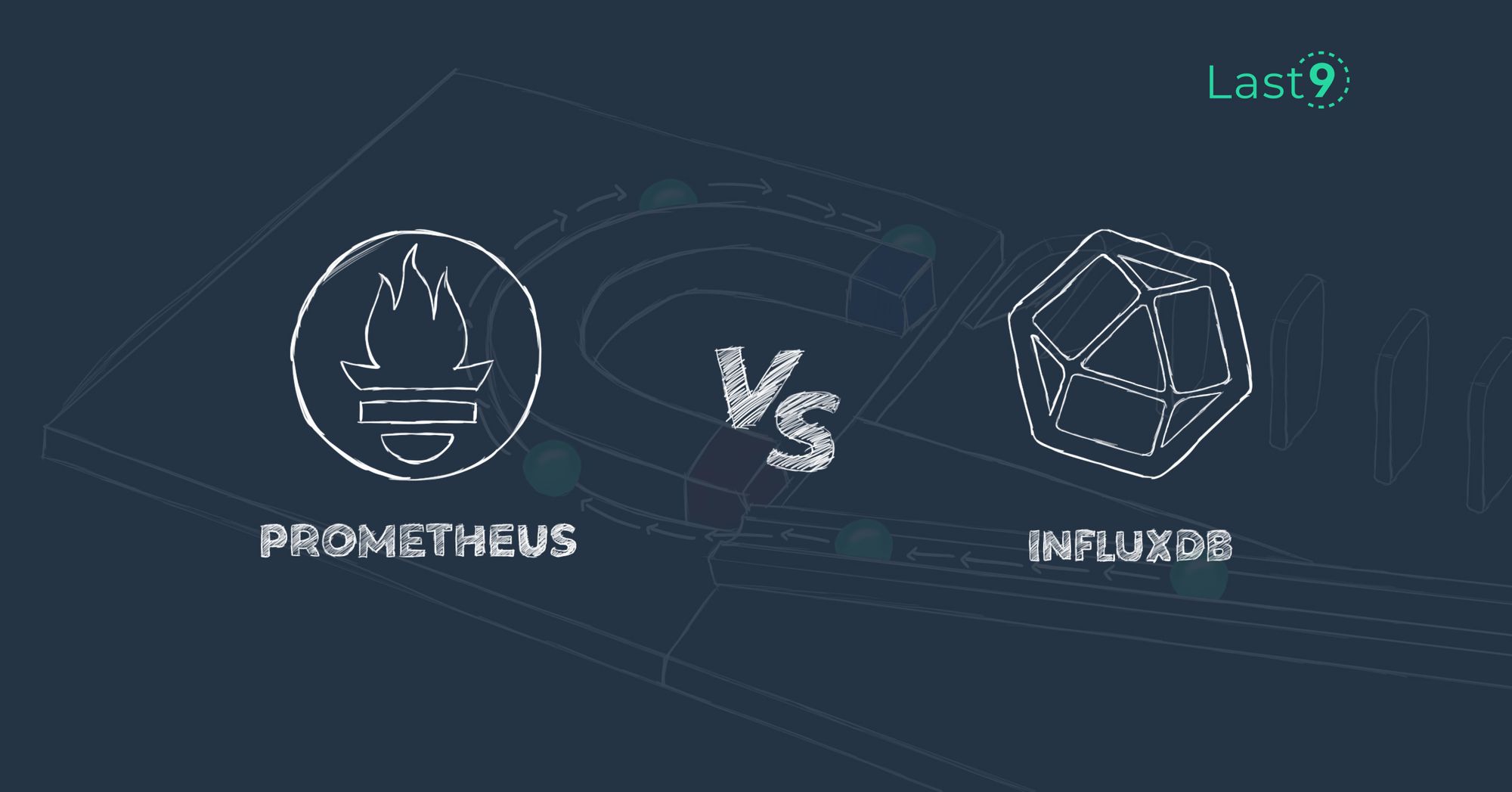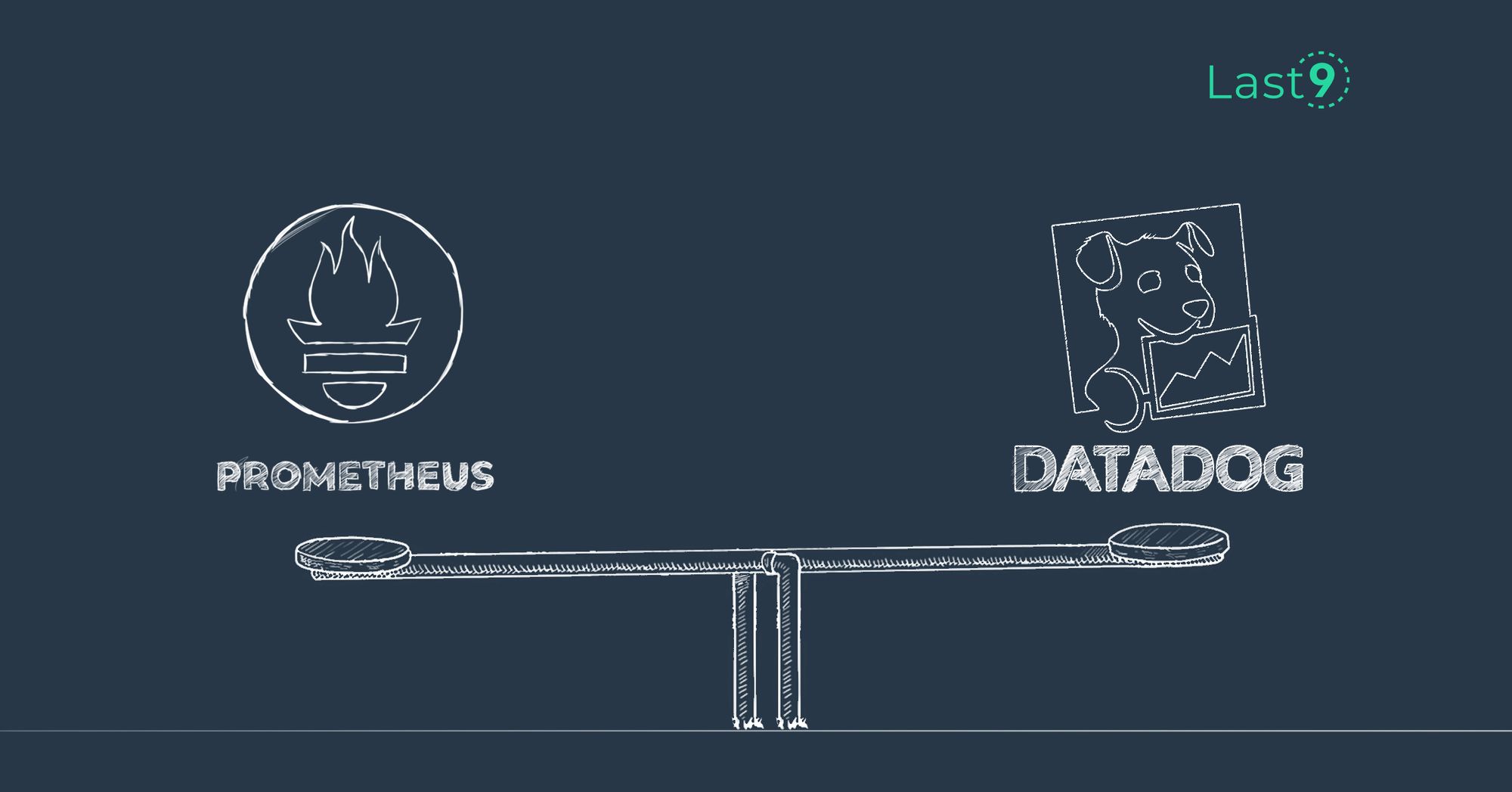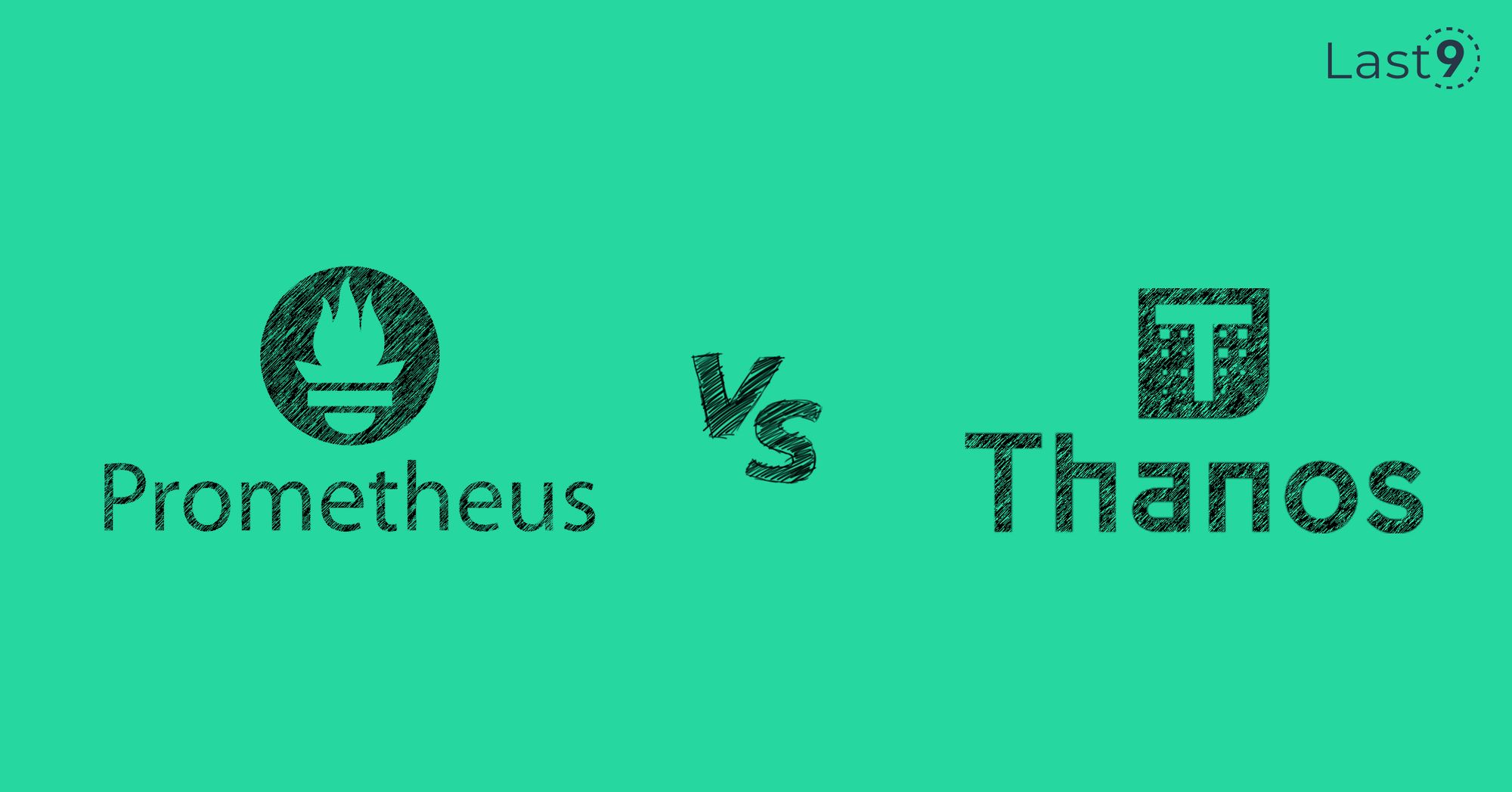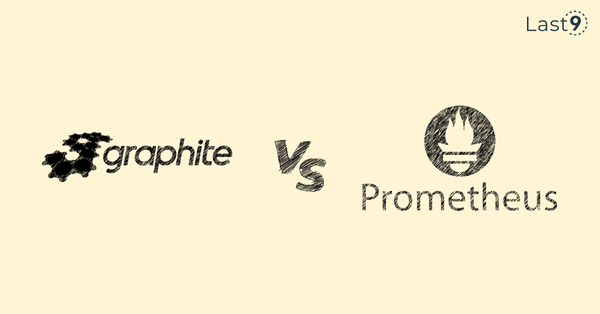If you’re building or operating cloud-native systems, metrics are probably your first stop on the observability journey. And two names keep showing up: Prometheus and InfluxDB.
Both are open source, widely adopted, and built for time series data. But they solve different problems in different ways.
This blog breaks down how Prometheus and InfluxDB compare, so you can pick the right tool for your stack.
Comparing Core Architectures: Prometheus vs InfluxDB
Prometheus is an open-source time series database built around a pull-based model. It collects metrics by scraping targets at fixed intervals, stores data in a label-based format, and exposes a powerful query language, PromQL, tailored for multi-dimensional queries.
Key architectural highlights include:
- Delta-of-delta compression for efficient storage of numeric time series
- Write-ahead logging (WAL) to improve durability and recovery time
- Data block compaction strategies that minimize disk usage over time
It’s tightly integrated with Kubernetes and widely used for monitoring infrastructure components.
InfluxDB is also open-source and written in Go, but designed with high-ingestion use cases in mind. It’s optimized for scenarios like sensor data, custom events, or fine-grained measurements.
Since version 1.3, InfluxDB uses a custom storage engine based on:
- Write-Ahead Log (WAL)
- Time Structured Merge (TSM) files
- Time Series Index (TSI) for scalable indexing
This design enables InfluxDB to support high write throughput and flexible data retention policies, especially in edge or IoT environments.
Feature Comparison: Prometheus vs InfluxDB
If you're deciding between Prometheus and InfluxDB, it helps to break things down feature by feature.
Here’s a side-by-side look at how they differ across data collection models, storage engines, query languages, and more.
| Feature | Prometheus | InfluxDB |
|---|---|---|
| Data Collection | Pull-based (scrapes metrics endpoints at intervals) | Primarily push-based via Telegraf or client libraries |
| Primary Use Case | Real-time infrastructure monitoring and alerting | High-ingest workloads, sensor data, IoT, long-term trends |
| Query Language | PromQL (purpose-built for metrics) | InfluxQL (SQL-like) and Flux (functional, event-driven) |
| Data Types | Counter, Gauge, Histogram, Summary | Float, Integer, Boolean, String |
| Storage Engine | Custom TSDB with LevelDB index + per-metric files | WAL, TSM (Time-Structured Merge), and TSI indexing |
| Scaling | Single-node by design; federation and remote write needed for scale | Clustering only in the Enterprise edition |
| Security | Handled externally (e.g., Nginx reverse proxy, service mesh) | Built-in auth, HTTPS, and RBAC support |
| Visualization | Basic built-in UI; integrates well with Grafana | InfluxDB UI (v2), Chronograf, Grafana-compatible |
| Kubernetes Integration | Strong native support via kube-prometheus-stack | Decent support through Telegraf plugins |
| High Cardinality | Can cause performance degradation and OOM issues | Handles better, but costs grow with cardinality |
| Long-term Storage | Short retention by default; needs remote backends | Retention policies configurable out-of-the-box |
| Pricing Model | Fully open-source under Apache 2.0 | Open-core; advanced features gated under paid tiers |
| Community & Support | CNCF project, vibrant OSS ecosystem | Backed by InfluxData; enterprise support and training available |
How Prometheus and InfluxDB Collect and Store Data
Data Collection Models
One of the core differences between Prometheus and InfluxDB lies in how they ingest metrics.
Prometheus uses a pull-based model. It scrapes metrics from predefined HTTP endpoints at fixed intervals. In Kubernetes, this makes Prometheus especially powerful; it can auto-discover services as they spin up, thanks to built-in service discovery.
This model:
- Reduces the need to modify application code
- Works well in dynamic environments
- Supports relabeling and filtering before ingestion
InfluxDB, on the other hand, follows a push-based model. Applications, agents (like Telegraf), or edge nodes are responsible for sending data to InfluxDB’s API.
This push model gives you more control, but comes with some extra setup. You’ll typically need to configure:
- Bucket (destination for time series)
- Organization (tenant context)
- Auth token (to validate write access)
While this approach adds some friction upfront, it allows fine-grained control over what gets sent, when, and how often, which is useful for event-driven or IoT data.
Storage Engines and Compression
Both databases aim to optimize time series storage, but they approach it differently.
Prometheus uses its own custom TSDB. Each metric is stored in its file, while index data is handled by LevelDB. Compression is handled using delta-of-delta encoding, a technique borrowed from Facebook’s Gorilla paper.
It stores differences between timestamps rather than full values, minimizing disk usage for high-frequency data.
This model is:
- Fast for recent queries
- Efficient for infrastructure monitoring
- Not ideal for long-term storage or large retention windows
InfluxDB, in contrast, uses a layered storage engine:
- Write-Ahead Log (WAL) for recent writes
- TSM (Time Structured Merge) files for compact, durable storage
- TSI (Time Series Index) to index series keys efficiently
InfluxDB separates metadata (tags, series keys) from raw values, enabling longer retention periods with more flexible queries. But it comes at the cost of higher disk usage, especially when handling high-cardinality datasets.
Metric Models and Type Support in Prometheus vs InfluxDB
The way Prometheus and InfluxDB model and store time series data reflects their core design philosophies, and it affects what kind of data they’re good at handling.
Prometheus: Metric-Centric with Fixed Types
Prometheus uses a metric + label set model. Each time series is uniquely identified by a metric name and a combination of key-value labels. This design makes it easy to attach metadata (like job, instance, or env) without needing to define rigid schemas.
Prometheus supports exactly four data types — all focused on operational telemetry:
- Counter: Monotonic value that only increases (e.g. request count)
- Gauge: Value that can go up or down (e.g. memory usage)
- Histogram: Buckets values to track distribution (e.g. request durations)
- Summary: Similar to histogram but tracks quantiles over time
These types are baked into how Prometheus scrapes, stores, and queries data. You can’t log strings or booleans; it's built for numeric metrics only.
InfluxDB: Flexible Schema with Type Enforcement
InfluxDB uses a more traditional measurement + tags + fields model. Each data point is defined by a series key (like a table in SQL) and associated fields. Field types must remain consistent within the same shard (a group of time-partitioned data).
InfluxDB supports a wider range of data types:
- Float
- Integer
- String
- Boolean
This makes InfluxDB more suitable for workloads like:
- IoT telemetry (e.g., sensor values, device states)
- Application-level events (e.g, status codes, custom attributes)
- Non-metric time series (e.,g. logs or event payloads with tags)
That said, the flexibility comes with a trade-off: you need to manage type consistency more carefully to avoid ingestion errors.
Protocol-Level Differences in Integration Approaches
How a time series database connects with the rest of your stack can make or break its usefulness, especially when you’re dealing with distributed systems, remote storage, or high-volume pipelines.
Prometheus:
Prometheus keeps things intentionally minimal. It uses:
- HTTP-based scraping for metrics collection
- Remote Write/Read APIs for integrating with long-term storage backends
- Buffer-encoded data over HTTP to keep things fast and stateless
This simplicity is by design. Prometheus focuses on doing one thing well: collecting and querying metrics in a reliable, consistent way. Integrations with remote storage (like Thanos or Cortex) are intentionally decoupled, leaving flexibility to the ecosystem.
You won’t find support for TCP or UDP protocols here; everything is HTTP-based and built to be transparent.
InfluxDB:
InfluxDB takes a broader view of integrations and ingestion paths. It supports:
- HTTP APIs for most standard writes/queries
- TCP for faster, persistent connections
- UDP for lossy, high-throughput data (e.g., sensors, ephemeral events)
It also uses Snappy-compressed Protocol Buffers under the hood to reduce bandwidth, a useful feature when sending large volumes of metrics or logs.
This flexibility makes InfluxDB a good fit for more complex ingest scenarios (like edge collection or hybrid environments). But it does require a bit more effort to tune for performance and durability.
Prometheus vs InfluxDB on Security and Authentication
Monitoring systems deal with sensitive operational data, service health, deployment environments, and internal endpoints, so security isn’t just a checkbox.
How each tool handles authentication, encryption, and access control plays a key role in production readiness.
Prometheus: Keep It Simple (and External)
Prometheus follows the Unix philosophy: do one thing well, and let other tools handle the rest. That includes security.
By default:
- Authentication is handled externally (commonly via reverse proxies like Nginx or Envoy)
- Access control is minimal — there are no built-in roles or permissions
- TLS support depends entirely on the proxy or ingress controller you run it behind
- It’s designed with the assumption that it runs in a trusted internal network
This works fine for many teams running Prometheus inside Kubernetes clusters or air-gapped environments. But if you're in a regulated space (e.g., finance, healthcare), you’ll need to layer on security tooling yourself.
InfluxDB: Built-in Controls, Especially in Enterprise
InfluxDB ships with a more comprehensive security model, right out of the box.
- Native authentication with username/password credentials
- Role-based access control (RBAC) to define fine-grained permissions
- Built-in TLS/SSL support for encrypted connections
- Enterprise features like LDAP integration and audit logging (available in commercial versions)
This makes InfluxDB more appealing for teams that need built-in controls without gluing together extra components, especially when deploying in untrusted environments or exposing endpoints publicly.
How PromQL, InfluxQL, and Flux Compare for Querying Metrics
One of the first things developers notice when working with time series databases is the query language. It affects how fast you can get answers, debug issues, and build dashboards.
PromQL: Built for Metrics First
Prometheus uses PromQL, a domain-specific language designed for querying time series metrics. It’s not SQL, and that’s intentional.
PromQL focuses on:
- Rate and delta functions for counters and gauges
- Powerful aggregation operators (e.g.,
sum by,avg,max_over_time) - Label-based filtering, which aligns with Prometheus’s multi-dimensional data model
- Real-time alerting rules, often built directly into queries
It’s a compact, expressive language, but it has a bit of a learning curve if you’re used to SQL. Once mastered, though, it makes querying operational metrics fast and expressive.
InfluxQL & Flux: SQL-Friendly and Event-Aware
InfluxDB supports two query languages:
- InfluxQL: A SQL-like syntax designed to feel familiar to developers with traditional database experience. It’s simpler to learn and works well for basic aggregations, filtering, and retention queries.
- Flux: A more modern, functional language created to handle complex transformations, joins, and time-shifted analysis across multiple datasets. Flux is event-driven and much more powerful, but it comes with a steeper learning curve.
This dual-language support gives teams flexibility: start simple with InfluxQL, and move to Flux as requirements grow.
Visualization Strategies: Prometheus + Grafana vs InfluxDB UI
Turning time series data into actionable insights often comes down to how well your tools visualize trends, spikes, and patterns. Both Prometheus and InfluxDB offer visualization options, but they differ in how much is built-in versus delegated.
Prometheus: Grafana Is the Frontend
Prometheus includes a built-in Expression Browser, which is handy for quick checks, basic queries, and debugging alerts. But it’s not meant for dashboards.
For anything production-grade, Prometheus leans heavily on Grafana:
- Native integration with Grafana’s data source plugin
- A huge community of pre-built dashboards for Kubernetes, system metrics, application telemetry, and more
- Support for alert visualization via Grafana's Alerting and Alertmanager
- Expression Browser is still useful for fast validation/debugging in the browser
This tight Prometheus-Grafana combo has become the de facto stack for many SRE and observability teams.
InfluxDB: Native UI and Optional Grafana
InfluxDB ships with more built-in visualization options out of the box:
- Chronograf (part of the older TICK stack)
- InfluxDB 2.0 UI, which includes dashboards, templates, and native alerting
- Flux-powered visualizations that let you slice and reshape data before plotting
- Grafana support, though the community dashboard ecosystem is smaller compared to Prometheus
For teams that prefer fewer external dependencies, InfluxDB provides a more self-contained experience, especially useful for smaller teams or edge deployments where minimizing external tooling matters.
How Prometheus and InfluxDB Integrate with Cloud and Container Environments
For monitoring tools to work in modern environments, they need to speak fluent Kubernetes, plug into cloud APIs, and adapt to dynamic infrastructure. Here’s how Prometheus and InfluxDB compare on that front.
Prometheus: Built for the Kubernetes Era
Prometheus has become the default monitoring system for Kubernetes, and not by accident. Its pull-based model is a natural fit for containerized environments, where pods come and go frequently.
Key integrations include:
- Native service discovery for pods, nodes, services, and endpoints
- Built-in support for Istio, Linkerd, and other service meshes
- Cloud exporters for AWS, GCP, Azure — maintained and widely used
- Strong alignment with other CNCF projects like Envoy, Thanos, and Cortex
The result is a smooth developer experience with minimal glue code, making Prometheus the go-to choice for Kubernetes-heavy stacks.
InfluxDB: Flexible, But More Configuration-Heavy
InfluxDB supports cloud-native workloads, but takes a different path. Rather than scraping endpoints, it uses Telegraf agents and plugins to collect data.
It supports:
- Kubernetes integration through Helm charts and operators
- Telegraf plugins for collecting metrics from AWS, Azure, GCP, and various containers
- Serverless and edge monitoring, especially useful for IoT or hybrid setups
- Better for use cases where you push metrics from multiple sources into a centralized store
That flexibility comes with a trade-off: you’ll need to configure more components and manage agents, especially in highly dynamic environments.
Limitations of Prometheus and InfluxDB at Scale
Both Prometheus and InfluxDB hit scaling limits — just in different ways. Understanding where those limits show up can save you from performance bottlenecks, surprise costs, or an observability outage in the middle of an incident.
Prometheus: Short Retention, Memory Pressure, and Complexity Overhead
Prometheus was designed as a single-node system. It keeps recent data in memory and stores it on local disk, which works well for moderate-scale environments but can quickly run into trouble as things grow.
Key constraints:
- No built-in long-term storage (LTS) — you’ll need to integrate with external systems like Thanos, Cortex, or Last9 to persist historical data
- High memory usage for large cardinality sets (e.g., hundreds of thousands of unique time series), leading to OOM kills
- Scraping pressure increases with more services, replicas, and targets
- All metric endpoints must be reachable, which complicates networking in microsegmented or secure environments
Sharding across multiple Prometheus instances is possible, but managing federated setups adds operational overhead and makes troubleshooting span-based or global metrics harder.
InfluxDB: Index Bloat and Paywalled Horizontal Scale
InfluxDB, while more flexible in storage, comes with its trade-offs.
Key limitations:
- High disk usage from storing index data and values together — especially painful in high-cardinality scenarios (think: per-device, per-user, or per-tenant metrics)
- Query latency can increase over time as data volumes grow
- Clustering is only available in the Enterprise edition, so horizontal scale and high availability require moving to a paid tier
This means that while InfluxDB is easier to scale vertically out of the box, it hits walls unless you're willing to upgrade or accept degraded performance for large workloads in OSS deployments.
Where Prometheus and InfluxDB Fall Short: Querying, Alerting, and UI
Beyond scaling and storage, both Prometheus and InfluxDB come with functional trade-offs that can impact performance, flexibility, and user experience, especially as your monitoring needs become more complex.
Prometheus: Lightweight by Design, But Missing Advanced DB Features
Prometheus keeps its design minimal and focused, which is great for reliability, but limiting when you need database-like power.
What’s missing:
- No stored procedures or scripting support for multi-step transformations
- No query compilation or optimization for heavy workloads
- No concurrency control, so performance can degrade with simultaneous large queries
This isn’t a dealbreaker for standard infra monitoring, but it shows when you’re trying to correlate data across services or run deep aggregations across high-cardinality workloads.
InfluxDB: Visualization and Latency Bottlenecks
While InfluxDB has more flexibility in its query engine, users often run into friction elsewhere:
- Dashboard lag when used with Grafana, especially under heavy query loads
- Native alerting is limited unless paired with Kapacitor (a separate tool)
- InfluxDB UI is better than Prometheus' expression browser, but still limited compared to Grafana or other observability platforms
These constraints can impact the overall developer experience, especially when fast dashboards and alerting feedback loops are critical to your workflow.
Open Source vs Vendor Support: Prometheus vs InfluxDB
A monitoring tool isn’t just about features — it’s also about the people behind it. Strong community backing, ecosystem maturity, and support options can make or break adoption, especially when you're deep in debugging or scaling pains.
Prometheus: Open Source, CNCF-Backed, and Thriving
Prometheus has one of the most active and mature communities in the observability space. It's backed by the Cloud Native Computing Foundation (CNCF), which gives it long-term stability and integration across dozens of CNCF projects.
- Thousands of contributors and active GitHub discussions
- Extensive documentation, examples, and guides
- Dozens of community-built exporters and integrations
- Supported commercially via vendors like Last9, Grafana Labs, and others
This ecosystem makes it easier to debug issues, find battle-tested patterns, and plug into production-ready setups quickly.
InfluxDB: Commercial Support with a Polished Developer Experience
InfluxDB leans more toward a vendor-backed model, led by InfluxData.
- Official docs are well-written and updated regularly
- Direct vendor support for troubleshooting and onboarding
- Training, certifications, and webinars available for teams
- Maintained community forums and GitHub repo activity
While the community is smaller and less organic than Prometheus', the trade-off is more formal support, especially useful in regulated or enterprise environments where SLAs matter.
Prometheus vs InfluxDB: When to Use What
Choosing the right tool isn’t about which one has more features; it’s about what makes sense for how your systems behave and how your team works.
Prometheus Works Best When..
Prometheus is a natural fit for cloud-native setups, especially anything running on Kubernetes. It’s built around scraping metrics from dynamic systems, and its real strength is in fast, reliable alerting.
Use Prometheus if:
- You’re running Kubernetes, and want something that plugs in cleanly
- You’ve got a microservices setup, with services spinning up/down all the time
- You care about real-time monitoring and low-latency alerting
- You already use Grafana, and want full PromQL power
- You’re okay with short-term storage and can hook in a long-term backend like Last9, Thanos, or Cortex when needed
It’s opinionated, but solid, especially if you like wiring things up yourself.
InfluxDB Is Better For..
InfluxDB gives you more flexibility around what kind of data you store, not just metrics, but events, logs, sensor data, etc. It’s great when you’re dealing with systems that push data, or when you want to store different data types (strings, booleans, etc.).
Use InfluxDB if:
- You’re handling IoT or edge data, and can’t rely on scraping
- You need to retain data for longer, or set custom retention policies
- You’re working with event data, logs, or stuff outside traditional metrics
- You want more built-in visualization, and don’t want to rely on Grafana
- You’re okay using Flux for advanced queries, or sticking with InfluxQL for simpler stuff
InfluxDB is more flexible, but takes a bit more setup if you're going cloud-native.
The Last9 Advantage
Last9 is a telemetry data platform built to handle Prometheus and OpenTelemetry data, without all the scaling and maintenance headaches.
Here’s what you get:
- 50% lower storage costs, thanks to a usage-based pricing model
- High-cardinality queries that don’t slow down or blow up memory
- Handles massive scale, minus the complexity of running federated Prometheus setups
- No need to worry about deduplication, scaling, or managing shards
- Just configure a simple remote-write endpoint, and you're good to go
If you're hitting the limits of Prometheus or InfluxDB, whether it’s memory, retention, or just too much ops work, Last9 helps you scale observability without starting from scratch.
Talk to us today, or if you'd like to get started on your own pace, start your free trial now!
FAQs
Is Prometheus better than InfluxDB?
Depends on what you’re solving for. Prometheus is great for Kubernetes-based environments, real-time alerting, and metrics scraped from services. InfluxDB is better when you need long-term storage, support for non-numeric data, or you're pushing data from edge or IoT devices. It’s not about “better,” it’s about fit.
What is the difference between StatsD and Prometheus?
StatsD is a metrics daemon that collects and forwards data, usually push-based and simple. Prometheus is a full-blown time series database with a query engine, alerting rules, and service discovery. Prometheus pulls data; StatsD pushes it. One's a pipe, the other’s a brain.
Which database is best for Prometheus?
Prometheus uses its own internal TSDB by default (good for short-term storage). For long-term durability, teams plug in solutions like Thanos, Cortex, or Last9. These let you scale Prometheus horizontally and store months or years of data.
When not to use Prometheus?
Avoid Prometheus if:
- You need to push data from devices (no scrape endpoint)
- You require long-term storage out of the box
- You’re dealing with high-cardinality datasets (lots of unique labels)
- You want strong built-in auth, RBAC, or TLS without extra components
What are Prometheus and InfluxDB?
Both are open-source time series databases built for storing and querying timestamped data, like system metrics, events, or sensor readings. Prometheus was built with infrastructure monitoring in mind. InfluxDB has broader support for custom data types and long-term analysis.
What is InfluxDB?
InfluxDB is a time series database that can ingest, store, and query high-volume, timestamped data. It supports SQL-like queries (InfluxQL), event processing (Flux), and comes with its dashboard UI. Commonly used for IoT, DevOps, and real-time analytics.
What do you dislike about using Grafana?
It’s powerful, but:
- Managing multiple data sources can get messy
- Complex dashboards can slow down under load
- Alerting config can feel disjointed
- Permissions and RBAC are limited without Grafana Enterprise
Still, for most dev teams, the pros outweigh the quirks.
What are Metrics?
Metrics are numeric representations of data measured over time, like CPU usage, HTTP request counts, or queue lengths. They’re typically structured as time series and used for monitoring, alerting, and capacity planning.
Does anyone use Grafana for dashboards?
Yes, almost everyone in infrastructure and monitoring does. It’s the default frontend for Prometheus and is widely used with InfluxDB, Loki, Graphite, and even MySQL or PostgreSQL. If you're not using it, you're likely reinventing something worse.
Why Build a Time Series Data Platform?
Because basic monitoring doesn’t scale. A platform lets you:
- Correlate metrics across services
- Detect trends over time
- Trigger meaningful alerts
- Feed ML or anomaly detection systems
It’s the difference between “what just broke” and “what’s about to.”
How do Prometheus and InfluxDB compare in terms of scalability and performance?
Prometheus is fast and efficient for real-time data, but it hits memory limits with high cardinality and lacks built-in horizontal scaling. InfluxDB handles longer retention and more diverse data types, but clustering is gated behind its enterprise version. Both need tuning as the scale increases.
How does Prometheus compare to InfluxDB for time series data?
Prometheus is optimized for infrastructure metrics, scrape, alert, and move on. InfluxDB supports more flexible data types and retention, which makes it better for event-heavy workloads or mixed telemetry (like logs + metrics in one place).
How do Prometheus and InfluxDB compare for time-series data storage?
Prometheus stores data locally and short-term unless paired with an LTS solution. It’s optimized for recent data. InfluxDB is better suited for long-term storage, with configurable retention and support for downsampling. But its disk usage grows faster, especially with high cardinality.



